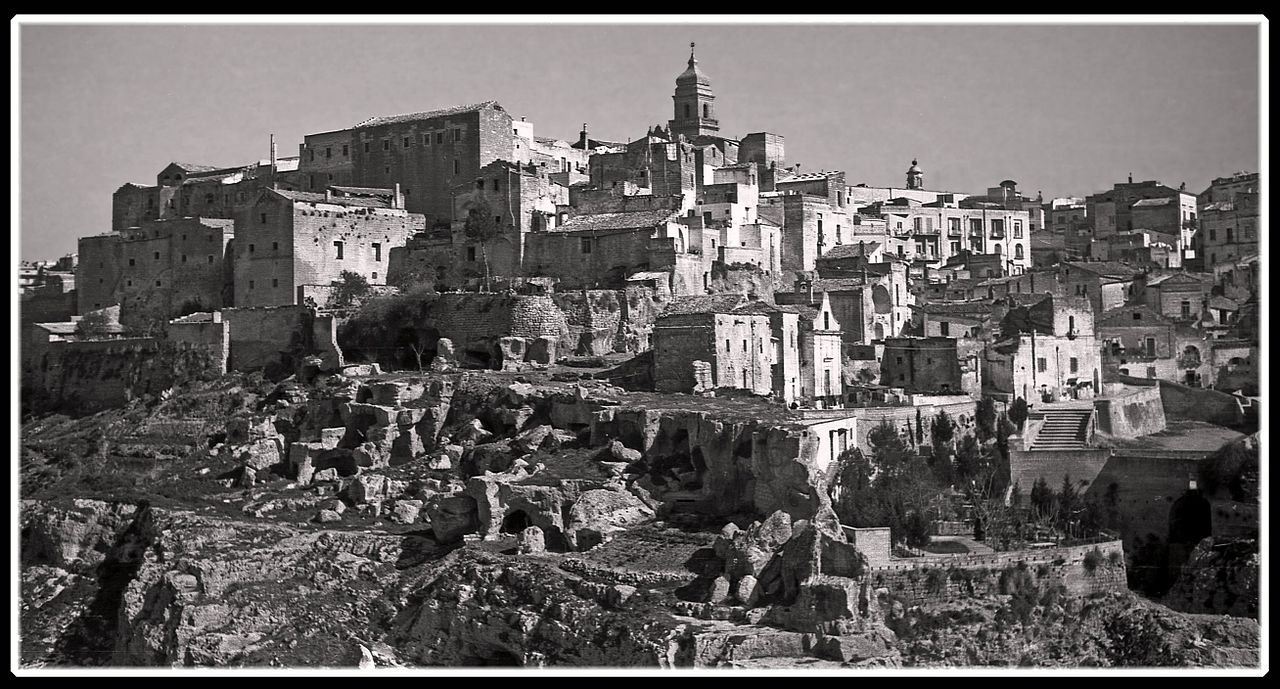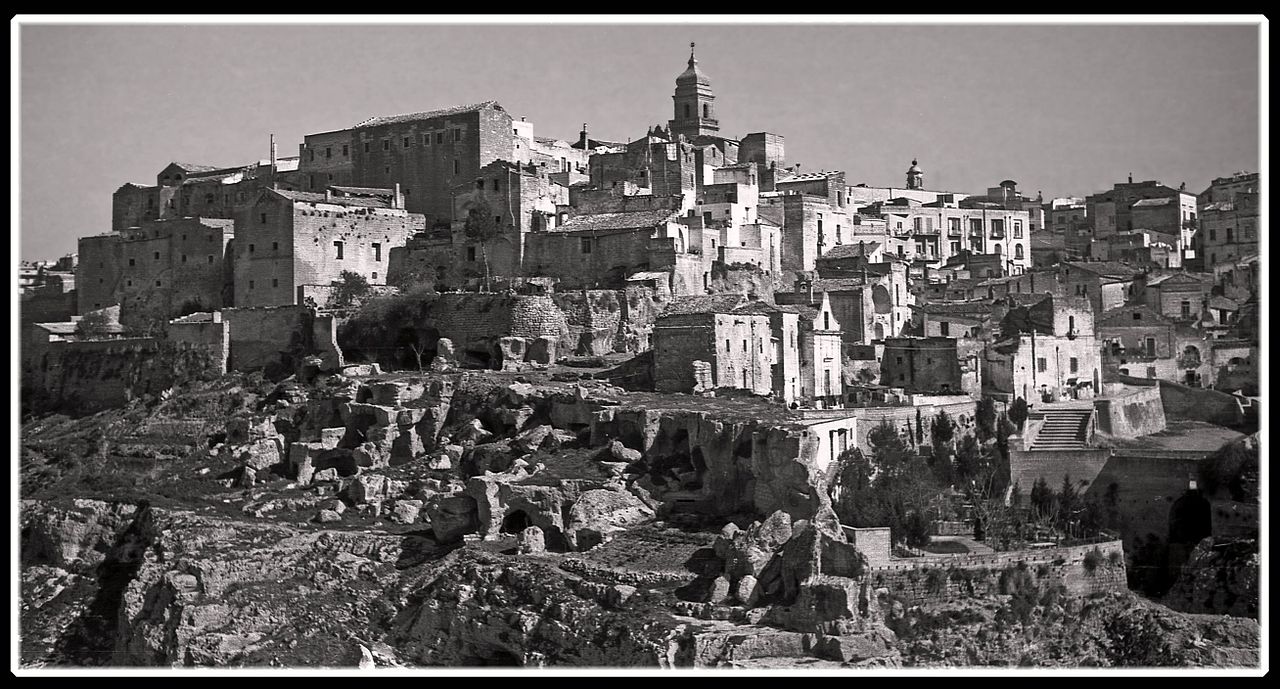
Gravina

Gravina di Puglia
foto d’epoca (CC BY-SA 3.0, https://it.wikipedia.org/w/index.php?curid=3694887)
Questa città dell’Alta Murgia già nel nome anticipa le particolari caratteristiche della sua conformazione paesaggistica. L’intero paese sorge su una profonda grave.
Le grotte naturali e le cavità artificiali scavate tra queste pareti rocciose, nel corso dei secoli, sono state adibite ad abitazioni, stalle, rifugi, e luoghi di culto. Tra le tante chiese rupestri presenti merita una visita la Basilica di San Michele delle grotte: un ambiente suddiviso in cinque navate da ampi pilastri. Sono ancora visibili i resti di affreschi del XII-XIII secolo. In uno dei locali annessi alla chiesa è possibile visitare un ossario, un macabro deposito di resti umani, che una tenace tradizione popolare vuole siano le ossa dei cittadini di Gravina, massacrati durante una delle incursioni saracene del X secolo.
A Gravina il visitatore potrà ammirare all’interno del poco noto, ma ricco Museo Pomarici-Santomasi la ricostruzione puntuale degli ambienti della cripta di San Vito e dei suoi bellissimi affreschi medievali, tra i quali segnaliamo un Cristo Pantocrator in trono e una Vergine in trono. Il museo si trova nel palazzo seicentesco della Fondazione Pomarici Santomasi. Nei suoi due piani sono anche ospitate la Pinacoteca, i reperti archeologici dell’area di Botromagno, la Biblioteca, l’Archivio Storico e le sale di lettura.
Telefono:+39 080.325.10.21
Fax:+39 080.325.10.21
E-Mail:info@fondazionesantomasi.it
Via Museo n. 20 – 70024 Gravina in Puglia (Ba) – Italy
ORARI
Mar/Dom: 9.00-13.00 | 16.00-20.00
Lunedì chiuso
